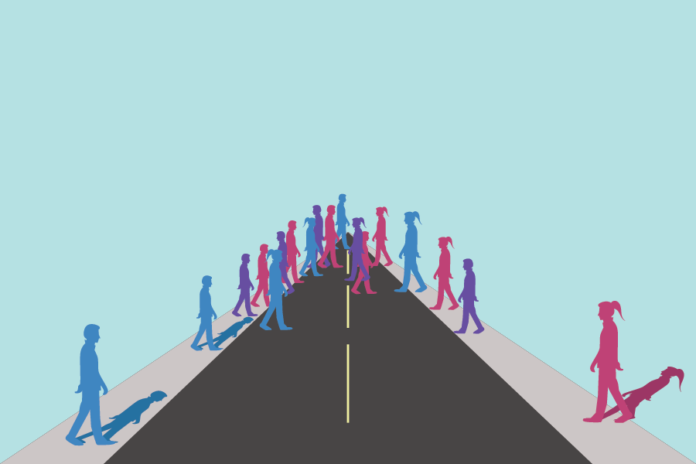We need the right balance between wide and narrow street lanes
When I was 12, I went to England and noticed something about the design of the neighborhoods that began to irk me — the two-lane streets were so narrow that they were just about the same size as a single street lane in America.
Transportation engineers and planners have long held that wider lanes are safer, and common sense would suggest that is correct. Wider lanes means cars have more space, and therefore the chances of scraping or scratching is going to be much smaller. But, as it turns out, that assertion isn’t correct. There are a number of reasons to narrow most street lanes and ironically, safety is the primary reason.
“Policy on Geometric Design on Highways and Streets,” also referred to as the “Green Book,” is commonly referred to by traffic engineers to inform their projects. The “Green Book,” written by the American Association of State Highway and Transportation Officials (AASHTO), recommends constructing 12-foot lanes where there is a high speed of traffic, such as on freeways. Switching to a narrower lane is perfectly acceptable in other areas of traffic, however, and could even have some advantages.
A report from the Transportation Research Board found that lanes with widths of 10 feet or more, as opposed to 12 feet, resulted in accident rates that were either reduced or unaffected. Turns out that narrowing lanes doesn’t intrinsically increase the likelihood of an accident and could actually be safer.
“The one way that narrower lanes are safer is because it tends to slow down drivers,” said Dr. Susan Handy, a UC Davis professor in the Department of Environmental Science and Policy and director of the Sustainable Transportation Center. “Psychologically, their space is narrowed and they’re going to drive more slowly.”
A key component to making streets safer is paying attention to speed. When cars travel at high speeds on urban streets with pedestrians and cyclists, the likelihood of pedestrian accidents also increases.
Research shows that pedestrian fatalities increase around wider lanes as a result of the psychological impact on drivers, which makes them feel they have more room to drive faster, according to Handy.
“Twenty miles an hour, you’re going to get hurt, but you’re probably going to live,” Handy said. “But by the time you’re hitting 30, 40 miles an hour, if you’re a pedestrian and you’re hit by a car, you don’t have much chance at all, whereas the driver is going to be perfectly fine.”
Lane width doesn’t just affect road safety — it can also be better for the environment.
“There’s a lot of rock that gets moved to pave our roads, so there’s huge environmental costs,” Handy said. “Then once you have pavement, there’s environmental impacts because that’s impervious cover, meaning [that] when it rains, the water doesn’t trickle down into the earth — it collects and runs off. And we have to collect the storm water from our streets, and that storm water picks up all kinds of pollutants from the pavement that the cars have left behind.”
Unnecessary pavement in wider lanes also contributes to the heat island effect. This phenomenon occurs when the lack of “open land and vegetation” in urban regions causes it to grow warmer, creating an “island” in which the temperature can increase more than in rural areas, according to the Environmental Protection Agency. Using wider lanes means less space for grass and other forms of greenery, as well as less room to create wider biking lanes.
“That’s space that we could be using for other purposes: housing, […] greenery,” Handy said. “I mean, wide streets make for unpleasant places.”
Yet, this isn’t a call to narrow all streets and roadways across the board. There’s a hierarchy of streets which roughly begins with local streets, then arterials and, eventually, freeways. Some of these roadways could benefit from narrower lanes, but others, like freeways, should be kept wide.
“The whole purpose of a freeway is to go fast, and we don’t have pedestrians — we’ve kept them off freeways,” Handy said. “So if we’re going to have freeways, then, you know, it probably makes sense to have a little more space there.”
Street width is one of many design solutions in addressing the safety and environmental concerns associated with automobiles and driving. Speed humps and other road designs can help in achieving this goal.
“There are things you can do — what we call traffic calming. Speed bumps are one part of that, but there are a lot of other techniques,” Handy said. “What we need to do if we want to make streets safer for pedestrians and bicyclists is slow down the traffic. That’s the big thing. And again, that’s why lane widths matter.”
Written by: Simran Kalkat — skkalkat@ucdavis.edu
Disclaimer: The views and opinions expressed by individual columnists belong to the columnists alone and do not necessarily indicate the views and opinions held by The California Aggie





